King's Cup - 1925
All Aviators who took part in the 1925 King's Cup Race
- click on aviator's name for full biography
-
-King's Cup - 1925
-
-The Aviators
The Aviators
-
Barnard, Charles Douglas
Capt Charles Douglas Barnard
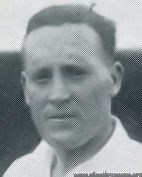 photo: 1930
photo: 1930Personal pilot to the Duchess of Bedford, 'ribald and golden-haired'.
b. 8 Dec 1895 in London; his father, Charles Gilbert Barnard, was a master printer (and not related to Franklyn Barnard's father). He learnt to fly in 1915 with the RFC. After WWI, became a test pilot for Sopwith, then a pilot with the de Havilland Airplane Hire Service after meeting Alan Cobham, then their chief pilot, in Spain.
In July 1920, he was convicted of manslaughter, for killing an elderly man in a car accident in which he failed to stop, and didn't report; "Charles Barnard (24), a demobilised airman from Watford whose machine was brought down in flames in France, was charged with the manslaughter of Alfred Sharp on the night of May 2, by knocking him down whilst driving a motor-car. A button, answering the description of other buttons from the deceased's coat, was found between the bonnet and mudguard of the accused's car. He was remanded, bail being refused." It also turned out that his driving licence had lapsed at the time, and he hadn't renewed it until some days after the accident.
He was given 4 months imprisonment in the 'Second Division' (such prisoners were kept apart from other classes of prisoners, received more frequent letters and visits and wore clothes of a different colour). The Judge said there was "too much reckless driving by people who served in the war. Their war services were no consolation to bereaved relatives."
Settling down a bit after that, he was the pilot in 1923 when an aeroplane belonging to the de Havilland Hire Service was used to ferry Commander Bristow to have a look at an Italian ship, the D'Aosta, which had become stranded in Malta. It was the first time the flight had been made, and it took over 14 hours, mainly (Charles complained) because the authorities in Pisa insisted on a deposit of 15% of the value of the machine.
One of his other jobs for the de Havilland Hire Company was to fly G-EBGT 'Nulli Secundus', a perfectly good D.H.9c, while a certain Captain Spencer jumped out of it - see the video here.
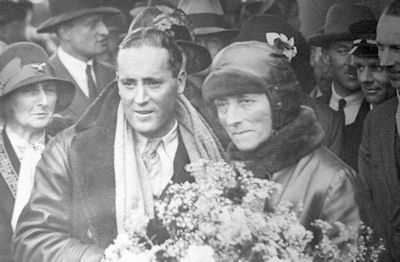
His first long-distance flight with the Duchess of Bedford was a tour in 1927 from her home in Woburn Abbey to France, Spain and North Africa, covering 4,500 miles in 3 weeks. Two years later, he piloted her Fokker monoplane, the 'Spider' to India and back, 10,000 miles in 88.5 hours; the RAeC gave him their Gold Medal for the year. It wasn't their first attempt at the flight to India and back - a year before they had tried the same thing, but problems with the propellor meant that the Duchess had had to come back by steamer from Karachi (which at the time was in India, of course).
In 1928, described as a 'flying man', he was cited as the co-respondent in a divorce case. At the time, he and Mrs Melita Erna May were living together at his place in Monmouth Rd, Bayswater; they got married in December.
In 1930 he and the Duchess made another record flight from London to Cape Town and back, 19,000 miles in 20 days, and he again flew to Malta and back in Puss Moth G-AAXW in 2 days: see the videos here :http://www.britishpathe.com/video/to-the-cape-and-back-in-19-days and here: http://www.britishpathe.com/video/malta-and-back-in-2-daysIn 1931, he was seriously injured when he, Lord Lovelace and their American mechanic crashed near Tripoli, as they were flying to Kenya.His marriage didn't last; Melita left him in 1933 and filed for divorce. He was in court again, when he was accused of assault by Mr Thomas Birks, a solicitor's clerk. Charles, described as a 'civil pilot wth a distinguished record' tried to persuade his wife to return to him, and somehow thought that a revolver might help; Mr Birks tried to intervene, and alleged that Charles fired a shot at him. Charles, however, won the case and was awarded 15 guineas damages (although he had asked for 50).He then formed his 'Flying Circus' - 8 aeroplanes which toured India in 1933 "giving displays of formation and stunt flying to over a million people who have never seen such a thing before... Joy rides will be offered to people at a small charge".He was back again by popular request in 1935, as co-respondent in yet another divorce case - this time with Mariska Marguerite Spurr.d. August 7, 1971. Only 2 people went to his funeral... -
Barnard, Franklyn Leslie
Capt Franklyn Leslie Barnard OBE AFC
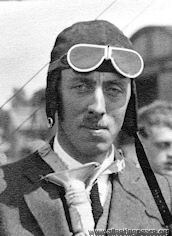 photo: 1925, aged 29
photo: 1925, aged 29 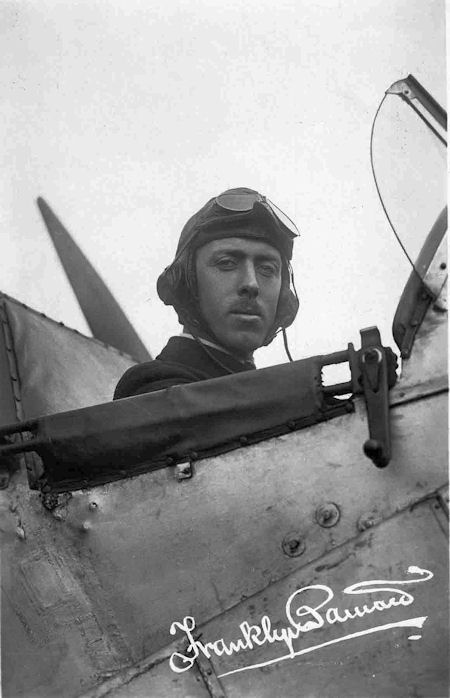
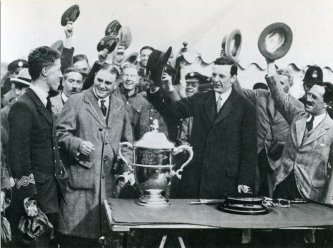
Winner of the first King's Cup in 1922. "an exceptional pilot - careful, skilful, and daring" and "his ability as an engineer was fully equal to his skill as a pilot".
b. 1896; his father, Owen Barnard, was a stockbroker's clerk (and not related to Charles Barnard's father).
AFC in WWI; chief pilot for Instone (later) Imperial Airways. OBE in 1927.
Killed in July 1927 while testing propellers for the Bristol Badminton which he had entered for the King's Cup Race, which crashed at Filton after the engine seized. Major Beaumont, appearing for Imperial Airways at the inquest, said the company felt it had "lost one of the world's magnificent airmen".
1927
It is with profound regret that we have to record the death, as the result of a flying accident on Thursday, July 28, of Capt. F. L. Barnard.
Capt. Barnard—one of our mostexperienced and popular pilots—was carrying out a test flight on the Bristol " Badminton " ("Jupiter VI ") biplane, which had been entered for the King's Cup Air Race, at Filton aerodrome, when, according to eyewitnesses, the engine suddenly stopped and the machine crashed to the ground just outside the 'drome from a height of about 200 ft. When a number of people who had been watching the flight arrived in the field where the machine had crashed, the latter was found completely wrecked, with the engine embedded in the ground, and the unfortunate pilot lying in the cockpit beyond human aid.
From evidence at the inquest, which was held on July 29, it appears that when Capt. Barnard's engine failed, he put the machine into normal gliding angle and attempted to land. While manoeuvring to do so, the machine lost flying speed and stalled from about 80 ft. Capt. Barnard had already made three other test flights on the machine, trying out different airscrews.
Capt. Barnard's loss to the aviation world is a great one indeed, for he was an exceptional pilot, careful, skilful, and daring—but daring only when flying alone or testing. He served in the Air Force during the war, and was awarded the Air Force Cross. Following the Armistice he was pilot to No. 24 Communication Squadron, when he carried many distinguished personages to and from the Continent. He then became associated with Instone Air Lines, and later, when Imperial Airways was formed, was their chief pilot.
His skill as a pilot was such that he was entrusted with many important aerial missions—the most conspicuous of which was the piloting of the Imperial Airways D.H. "Hercules" air liner, carrying Sir Samuel Hoare, Lady Maud Hoare and party from London to Cairo on the inaugural flight of the Egypt-India service. He also, it will be remembered, took part in previous King's Cup races, being the winner in1922 and 1925, and flying last year the Bristol " Badminton "in its original form.
Capt. Barnard leaves a widow and young son, to whom, in common with his many, many friends, we offer our deepest sympathy." - 'Flight'
-
Bulman, Paul Ward Spencer
Maj (later Flt-Lt) Paul Ward Spencer 'George' Bulman CBE MC AFC

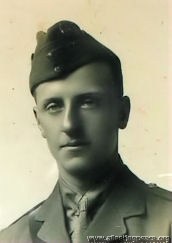 photo: 1917, when a 2nd Lieutenant in the RFC
photo: 1917, when a 2nd Lieutenant in the RFCUniversally known as 'George'; after WWI, test pilot at RAE Farnborough until 1925, then chief test pilot at Hawker Aircraft, where he took over from 'Fred' Raynham.
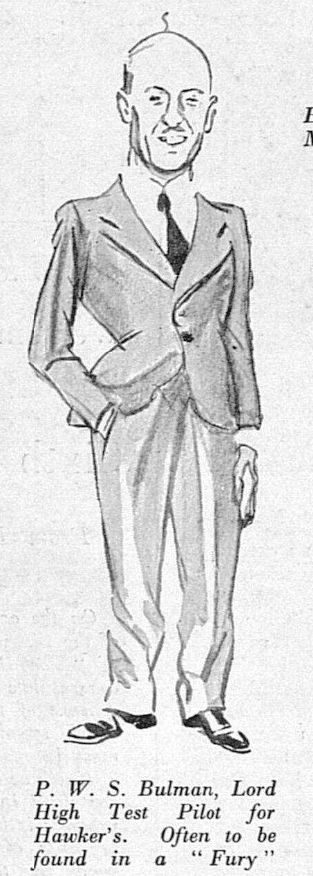 The Bystander Special Aviation Edition, 1933
The Bystander Special Aviation Edition, 1933It was at his instigation that the Hurricane was fitted with a variable-pitch propeller, "The improvement in performance was so impressive that the result was a panic of refitting of airscrews, and the effect on the outcome of the Battle of Britain can be imagined."
Harald Penrose said he was "a great little man, eager yet cool, eyes crinkled in a smile, bald head gleaming as he climbed helmetless into the cockpit".
d.1963
 seated in a prototype Hurricane c.1946
seated in a prototype Hurricane c.1946Britain's Test Pilots
Flight, 4th April 1946: “GEORGE” BULMAN might never have been known in the aircraft industry had he continued at his original occupation. In fact, he would have been more nationalized than he is now, because he started his business career in the Bank of England. Perhaps that is where he got his meticulous attention to detail.
Group Capt. Bulman is seldom known by his proper Christian name Paul, and it is interesting to learn how he ever came to be known universally as "George." He always confessed to a shocking memory for names, and during the 1914-18 war addressed almost everyone as "Colonel" or "General." When peace came, a civil edition had to be found, and his friends and acquaintances became Georges. They, in their turn, called him "George" Bulman.
A little more than a year before the Royal Flying Corps became the Royal Air Force in April, 1918, Bulman learnt to fly on a "Rumpety" (Maurice Farman Longhorn) of No. 4 Reserve Squadron at Northolt. Previous to this he had been in the Honourable Artillery Company, but was dead keen to become a motor cyclist despatch rider. A motor-cycling friend, however, managed to persuade him that flying was the thing really worth doing, and got him transferred to the R.F.C.
After his training, "George” was with fighters exclusively. First in No. 46 Squadron under Major (now Air Marshal, retired) Philip Babington, flying Sopwith Pups and then with No. 3 Squadron, when it changed over to Sopwith Camels. He went to No. 3 as a fighter expert, and in the fighting at Courtrai these tiny Camels—carrying four 20lb bombs each—operated with the tanks. This was the birth of the operations by Typhoons, the direct descendants of the Camel, in the Falaise Gap in the Battle of Normandy nearly 30 years later. It is impossible to get Bulman to talk about his deeds in the 1914-18 war. He was heard to let it slip on one unguarded occasion that he was a bloodthirsty young man, but farther than that he never goes. Asking how many enemy aircraft he got to his credit always brings the same answer: ''We flew as a Flight, and did no individual operations. All victories belonged to the Flight.” Nevertheless, he was awarded the Military Cross for his share.
First Test Work
At the close of hostilities in1918 he was granted a permanent commission, and almost immediately took up his first test flying. He was posted to the Daimler airfield at Radford, where Sopwith Snipes and S.E.5AS were produced, and shortly afterwards went to the ferry pool in the Midlands at Castle Bromwich. Here experience on twin-engined types was gained as the unit had to test and ferry D.H.10s (made by the Birmingham Carriage Co.) and Handley Page 0/400s.
It was because of his work here that he came to take up test flying as a permanent occupation. There happened to be a number of one-engined failures on the D.H.10s which had caused some loss of life among the ferry pilots. "Farnborough“ was investigating the trouble, and "George" took one to Farnborough to replace a crash. He had found the trouble in the petrol system, and the outcome of a talk on this with Roderic Hill (now Air Marshal Sir Roderic) resulted in an invitation to join Farnborough. That was in 1919.
His test flying at the R.A.F. dealt exclusively with engines, and the period between 1919 and 1925 proved to be a fascinating one ; as he puts it,'' ironing out the bugs of the air cooled radial engine." The team with whom he worked took the radial out into the world.
While at Farnborough he did a certain amount of testing for Blackburns, and, among other types, flew the Cubaroo, Blackburn, Beagle and Airedale. In view of the development to-day in helicopters, it is interesting to remember that 20 years ago, at Farnborough, he flew the Brennan helicopter, which had all the basic elements of the successful modern types. It was flown while partially moored in the old balloon shed.
About 1924 there came into existence the R.A.E. Aero Club, of which Oliver Simmonds (now Sir Oliver of Aerocessories) was the secretary, Mr Child the designer, and Bulman the chairman and competition pilot. A monoplane—the Hurricane—with triangular-section fuselage, was built by the members and fitted with a horizontally opposed engine, first a 600 c.c. Douglas motorcycle engine and later a 30 h.p. Bristol Cherub. This contraption nearly wrote "George" off. Vibration from the twin-cylinder engine was prone to shut the petrol off because the cock employed was one of the very ordinary "slide with a hole in it" models common to motor bicycles. This cock was under the dash and was critical of its setting. Imagine, then, the juggling required when the engine and airscrew stopped dead at 800ft. over Redhill while flying from Farnborough to Lympne for the competitions. He had to dive nearly vertically to get sufficient airspeed to force the engine over compression—no small task with a two-cylinder engine—and at the same time search under the dashboard for the petrol cock. The engine picked up with no height to spare.
Display Flying
Pilots who could fly as exquisitely as Bulman were very much in demand for the Royal Air Displays, which were then held on the last Saturday in June each year. Since he was already doing odd jobs for Hawkers, and was thes ervice pilot deputed to fly the Hawker Woodcock in 1924,it was natural that he and the Hawker people became well acquainted, with the result that in 1925 he resigned his commission and joined the company. The Horsley was being flown at the time, and Bulman took over the Mark I from Fred Raynham who was one of the very old stagers. Raynham was, I think, the only man who ever had a joystick break off in his hand and have to land the machine (a Handley Page monoplane) by the small socket at the base, letting go every second or so to look over the side to see where he was going. "George" did all the test flying on the Horsley II, including preparing it for thel ong-distance record, which it held for a few hours in 1927 by flying from Cranwell to Jask in the Persian Gulf. It was beaten the next day by Lindbergh flying from NewYork to Paris. If any pilot to-day thinks he is flying an overloaded aircraft let him remember that when the Horsley was filled with fuel ready for the record, it burst its tyres just standing on the tarmac!
Starting with the Heron and Hornbill, Bulman was responsible for test-flying all the Hawker prototypes right up to and including the Hurricane. The Fury (biplane) and Hart days were the days he loved. He worked like a Trojan turning good designs into super-good flying aircraft. This good test-flying, allied to his technical knowledge and charm of manner, undoubtedly played a big part in bringing the Hawker concern to the pre-eminence which it now enjoys.
Having got Philip Lucas to take on development flying of types later than the Hurricane, Bulman went to the U.S. in May, 1941, as Chief of the Test Branch of the British Air Commission. He had a team of 10 or 11 pilots with him, and they flew all the types of aircraft on order for the British Government, making out flight-test reports on the Boscombe Down pattern. At first this was a civilian job, but after America came into the war he wore uniform and was promoted to Group Captain.
Compressibility Recognised
It was whilst he was in America that Bulman realised that the peculiar happenings which test pilots were reporting were just what the scientists had foretold would happen when speeds in the region of that of sound were approached. Much experimental work was carried out on the Lockheed Lightning, and Bulman devised a method of flying whereby the effects could be intensified or diminished safely and at will. His notes to test pilots on the subject show a clear-cut appreciation of the problem, and he probably has more practical knowledge on the subject than anyone else.
According to Bulman, his test pilot's life was almost devoid of incident—certainly he was always careful to study everything on the ground before taking off—but he has had one or two close shaves. For instance, when he was flying the Leopard-engined Horsley to Denmark, he had a con-rod break over Heligoland. Landing in Germany was forbidden. So, finding that the engine would run at full throttle (imagine the vibration and racket) he flew to Groningen in Holland and landed there. The inside of that engine was a marvel to behold!
And here is a story told for the first time. I have had it filed away in a drawer for years. At a Household Brigade Club meeting at Hatfield "George" put up a remarkable show. To the spectators it appeared as if he climbed vertically to 3,500ft, stopped his airscrew and then, flicking into a vertical dive, regained his engine as he pulled out at no feet. What really happened was that he accidentally gave the Hart a little negative g at the top of the climb and this emptied the Kestrel's carburettor. From the wealth of his experience he remembered that an airscrew will start in a pull-out at 3 or 4g even when it refuses to do so in a straight dive.
After twenty years' service with the Hawker Company, he gave up the directorship which he had held since 1936, and is now taking a well-earned rest before coming back into the industry. But before leaving '' George '' to sit back for a while, let me quote one more case of how an enthusiastic man can get done a job which has far-reaching results. In 1938 all the Hurricanes had fixed-pitch airscrews, and no official sanction could be got for anything else. Bulman scrounged a Hurricane off contract and got de Havillands to collaborate by putting in a two-speed airscrew. He then borrowed a c.s. governor from the Hamilton Standard Corporation in America. The improvement in performance was so impressive that the result was a panic of refitting of airscrews, and the effect on the outcome of the Battle of Britain can be imagined.
-
Campbell, Thomas Wight
Mr Thomas Wight Campbell
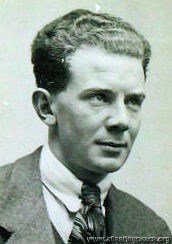 photo: 1921, aged 21
photo: 1921, aged 21'Jock', worked at RAE Farnborough; test pilot at Bristol with Frank Uwins in 1928; later a Wing Commander -
Cobham, Alan John
Mr (Sir) Alan John Cobham KBE AFC
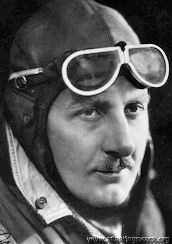 in c.1934, aged c.40
in c.1934, aged c.40
-
Courtney, Frank Thomas
Capt Frank Thomas Courtney
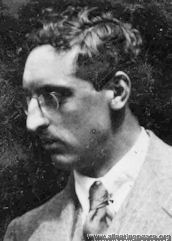
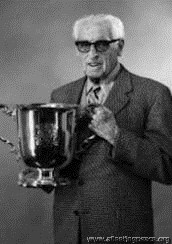 photo: 1972, holding the King's Cup at the RAF Museum, Hendon, aged 78
photo: 1972, holding the King's Cup at the RAF Museum, Hendon, aged 78An Irishman and early aviator; he test-flew the prototype D.H.18 - de Havilland's first purpose-designed airliner - in March 1920 and often flew it in service. Also flew in the 1929 Cleveland National Air Races. Also flew the Cierva autogyro in 1925, (but not in the King's Cup)
-
de Havilland, Geoffrey
Capt (later Sir) Geoffrey de Havilland O.M. K.B.E A.F.C Hon.F.R.Ae.S
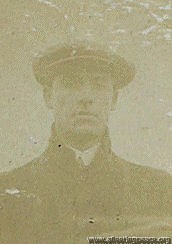 1911, aged 29
1911, aged 29  1936, aged 54
1936, aged 54Geoffrey de Havilland - Wikipedia has his story -
Forbes-Sempill, William (Lord Semphill)
William Forbes-Sempill, 19th Lord Sempill AFC
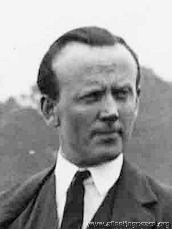 1930
1930Ah... yes... the aviation pioneer, chairman of the Royal Aeronautical Society, right-wing sympathiser and occasional spy (for the Japanese), who was motivated by his 'impetuous character, obstinacy, and flawed judgement', rather than money.
-
Hemming, Harold
Maj Harold Hemming AFC 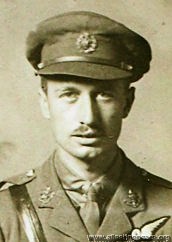
photo: 1916, when a Lieut in the Worcestershire Regiment, aged 23
Director (with Alan Butler as Chairman) of the 'Aircraft Operating Company'. In 1925, they were air surveying in British Guiana.
In 1923, he flew Alan Butler's DH37 'Sylvia' in the King's Cup, coming 5th (as had Alan himself, the year before), and then borrowed it again in 1925, coming 3rd.
Unfortunately, while he was making a test flight in 1927 in the DH37 (now re-engined and called 'Lois') the aircraft hit a scoring board and crashed. The passenger was killed and Hemming lost an eye and sustained other injuries.
-
Hinkler, Herbert John Louis
Sqn Ldr Herbert John Louis Hinkler 
photo: 1927, aged 35
Australian 'Lone Eagle', aviation pioneer, killed in a crash in Italy in 1933
-
Jones, Hubert Wilson Godfrey
Flt-Lt (later Sqn Ldr) Hubert Wilson Godfrey Jones  1916, when a Captain in the Welsh Regt, aged 26
1916, when a Captain in the Welsh Regt, aged 26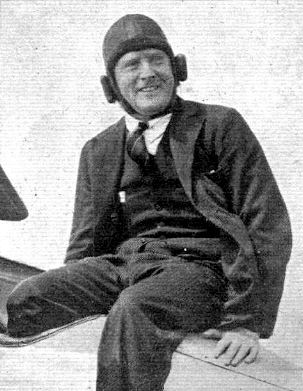 1924
1924b 7 Oct 1890, Llandilo, Carm, Wales
British Army 1913-16; RAF 1916-43;
Won the Hanworth-Blackpool Air Race, 15 Jul 31;
Died in WWII - 14 May 43, when serving with Station Flight, RAF Middle Wallop, his Hurricane IIb HV895 exploded and crashed in Sudbourne Marshes, during a flight from Martlesham Heath to Orford Ness bombing range to test a new bomb.
Research: thanks to Steve Brew
-
Longton, Walter Hunt
Flt-Lt (later Sqn-Ldr) Walter Hunt Longton 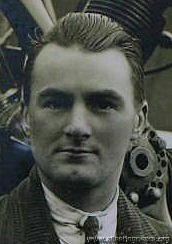 1916, aged 24
1916, aged 24'Scruffie' Longton, from Lancashire. 11 victories in WWI flying SE5s; DFC and bar.
Well known pre-war motor-cycling, and post-war aeroplane racer; whilst practising for the Bournemouth Air Meeting in April 1927, his aeroplane was hit by "one or two charges of shot from a sporting gun", possibly in protest at flying races on a Good Friday. A reward of £25 was offered for the detection of the culprit.
He was killed soon after - June 1927 - in a mid-air collision at the Bournemouth Whitsun Meeting, flying the prototype Bluebird.
"Every aircraft constructor knew that 'Longton's opinion' was worth having on anything new." C G Grey
-
Perry, Herbert Howard
Capt Herbert Howard Perry  1915, when a Sergeant in the RFC, aged 23
1915, when a Sergeant in the RFC, aged 23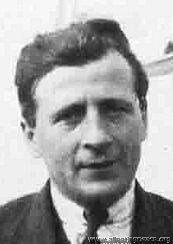 1922, aged 30
1922, aged 30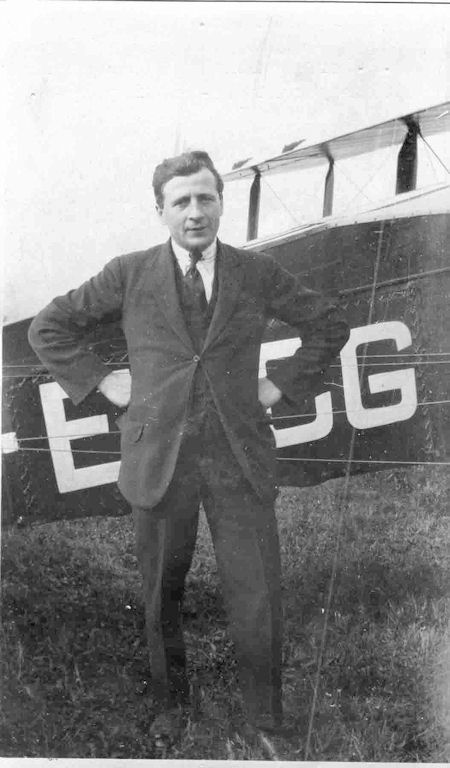 1922
1922b. Birmingham 3 Jul 1892
RFC in WWI; cross-channel pilot for Handley Page Transport 1920-22; test pilot for ADC Transport 1922-27. Joined Imperial Airways in 1927
Feb 1928: "A FLYING RECORD. Captain H. Perry, an Imperial Airways pilot, piloted a seven-ton Handley-Page Napier air liner, with a full load of passengers and freight, from London to Brussels on Saturday in 85 minutes flying time, a record for this type of machine."
Address in 1932: 'Sinaia', Cosdach Ave, Wallington, Surrey
A member of the Court of the Guild of Airline Pilots and Navigators in the 30s; awarded Master Pilot's Certificate in 1935





